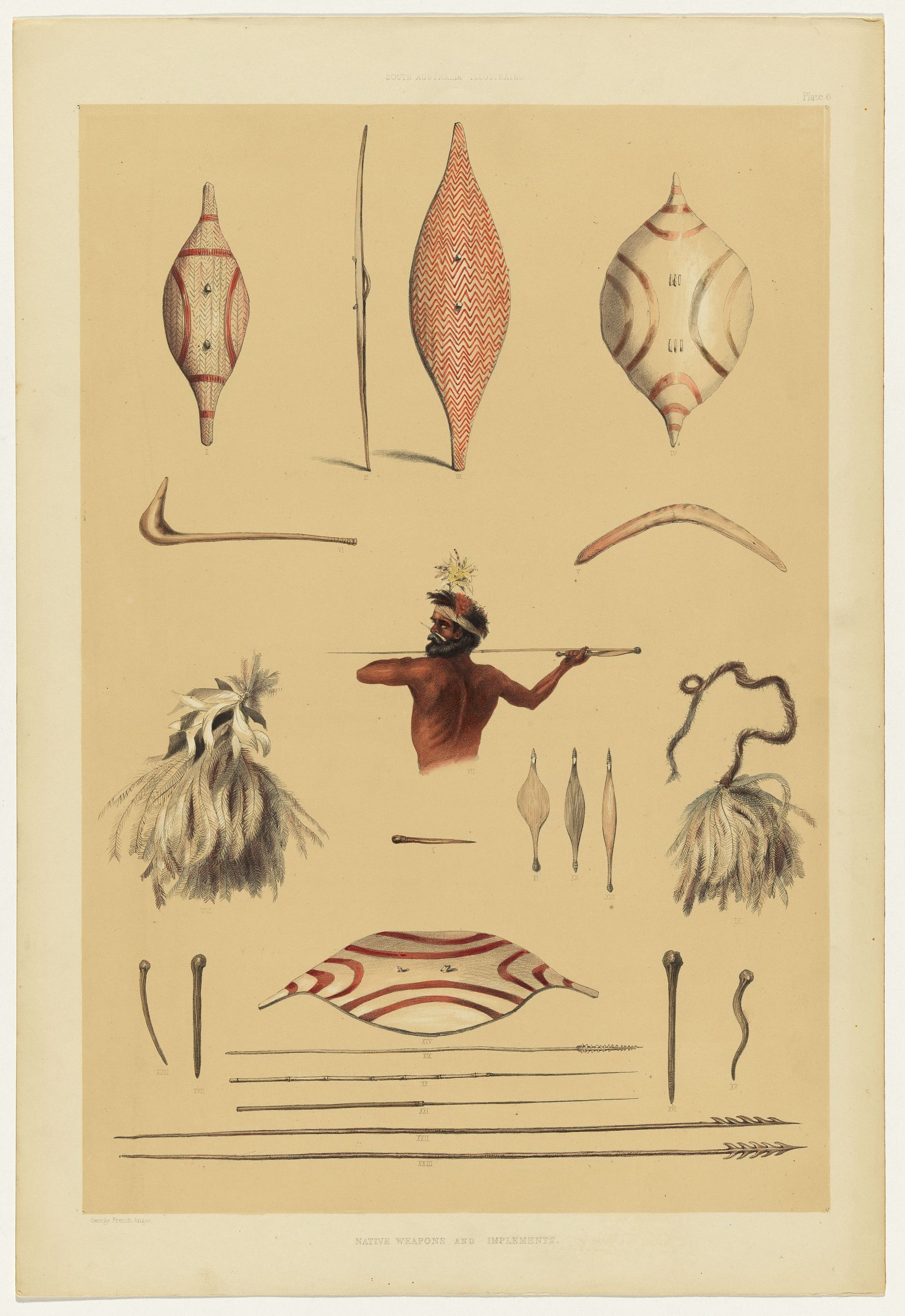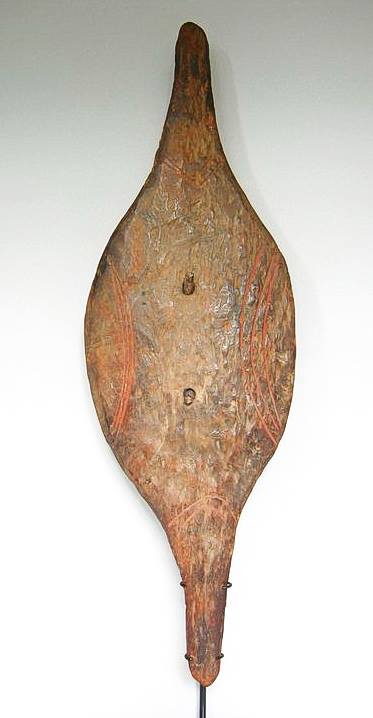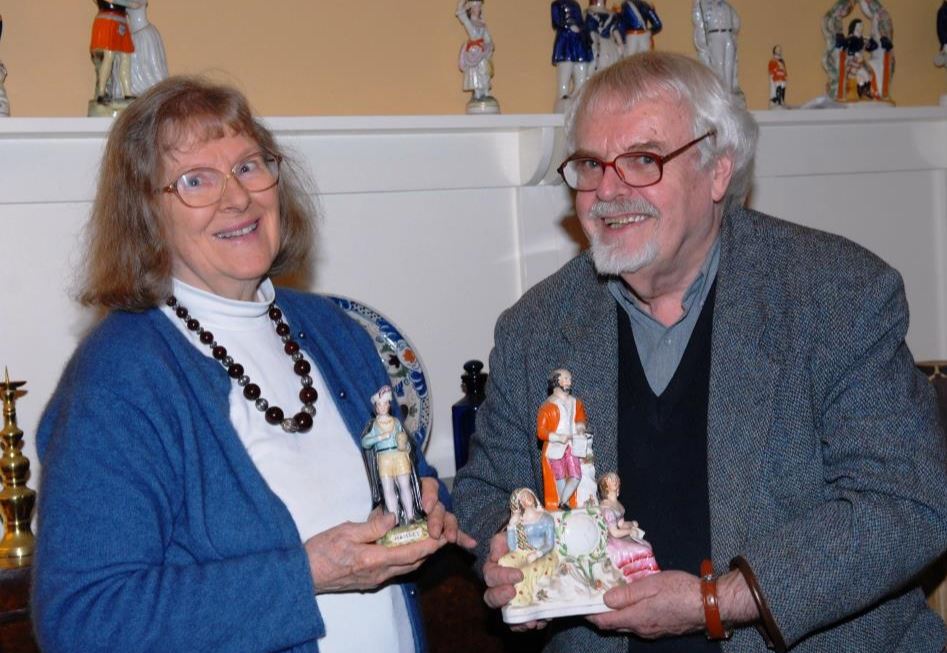
Abroad for almost 50 years, an extremely rare Murlapaka shield, a powerful symbol of Kaurna culture, has been brought back to country. Unearthed from an American's art teacher's home, its long journey back to the Art Gallery of South Australia has occurred thanks to much good luck and the good intentions of Adelaide art collectors Joost and Truus Daalde.
While historical Indigenous shields are prevalent from many parts of Australia, only seven known South Australian shields made before 1850 remain in existence. Most show telling signs of age and damage. However, the flawless condition of the Murlapaka shield that the Daaldes have sold to the Art Gallery of South Australia defines an unexpected treasure.
"We are pleased to have been able to restore something to the Kaurna community that they thought had been lost," says Joost, a retired professor of English at Flinders University. "We bought this treasure with the intention of bringing in home to Adelaide.

"If the Murlapaka shield just became an article for private trading, many people would quite rightly be very upset."
A Kaurna shield made before 1850 represents an irresistible attraction to art collectors, due to its rarity, yet the Murlapaka shield's true identify had remained unknown for at least half a century - thereby protecting it from the competitive international art collectors' market.
"For any serious tribal art collector, a South Australian shield would be their peak acquisition," explains Joost. "They would never expect to find one by chance." Yet this is exactly what happened.
Sydney art dealers Christopher and Anna Thorpe, of Thrope Gallery, prudently hunt beyond art auction houses to find rare native Oceania artworks, trawling online private auctions around the world to uncover forgotten gems. In 2010, they found an "Aboriginal shield" listed among the deceased estate of a former art teacher in the United States, who had owned it since the 1970s.
Without knowing its provenance, Thorpes bought the shield in the hope it may be a rare historical item. They contacted long-time customers Joost and Truus Daalde, Indigenous artefact collectors since the 1980s, for advice about the authenticity of the shield. The Adelaide couple were confident it was a South Australian shield, but a lack of interest from scholars to verify its origins resulted in no buyers prepared to pay a high price. With waning enthusiasm for the shield, the Thorpes offered it at a modest price to the Daaldes in 2011. "We bought it because we always believed it was a valuable item," says Joost. "We enjoyed the item ourselves for a while, but we knew that a larger story would unfold about its origins."
Two years later, Dr Philip Jones, Senior Curator of Anthropology at the South Australian Museum, announced that an Australian Indigenous shield in the British Museum had been incorrectly labelled as being sourced from Victoria. Dr Jones said it was a rare South Australian shield, noting that distinctive arched decorations around the face of the shield were specific to Kaurna culture. Joost and Truus recognised these markings as being identical to those on the shield they had bought.

"These shields are admittedly a thorny area for research, but this confirmed what we had presumed, that the shield was created by a Kaurna person," says Joost.
"We decided that we should not keep this forever, but that it belonged in an Adelaide institution, and that all people should benefit from being able to see it every day."
Noting that the South Australian Museum had bought a Murlapaka shield for $250,000 in 2008, the Daaldes began talking with the Art Gallery of South Australia about selling their shield to become part of the gallery's permanent collection.
Their choice of the Art Gallery is significant, honouring the Murlapaka shield as an artwork rather than just an object of curiosity and historical value. "It's an important differentiation to make. To me it has such a beautiful shape; it's very obviously a work of art," says Joost.
For several years, Joost displayed the shield in his home office, mounted on a specially designed stand so that it could be observed from all angles. "I got such great enjoyment every single time I saw it," he says. "The decoration is excellent - well composed, elegant in the way its leaf-shape is derived from nature. The handle is so smartly constructed - and it's so rare for something of this age to be completely intact."
The Art Gallery of South Australia purchased the shield for $150,000 in July, assisted by $100,000 provided from the federal government's Natural Cultural Heritage Account, and through Tarnanthi: Festival of Contemporary Aboriginal & Torres Strait Islander Art supported by BHP.
Senior Kaurna Man, Mickey Kumatpi O'Brien, says that to have the Murlapaka shield back on Kaurna lands is Paitya (deadly).
"The Murlapaka shield shows strength in its design, protection in its history, connection to country in its image, and the spirit of its creator in its life. We know the land is the oldest living thing, the trees are connected to this land the knowledge and wisdom of the land is in the trees," says Mickey Kumatpi.
"The shield itself was cut from a tree and its shadow remained in the tree and the shield took with it the knowledge and wisdom of the land, culture and people. It returned to its home of the Kaurna
Miyurna (Adelaide Plains People). And now it tells many stories, when we listen, observe and share its journey and place, thanks to the support of the Gallery."
Barkandji artist and Art Gallery of South Australia Curator of Aboriginal and Torres Strait Islander Art
Nici Cumpston says the Murlapaka shield is made from the inner bark of a Eucalyptus tree with remnants of red earth pigments over the shield surface. It is one of two types of shield made by the Kaurna people and a powerful symbol of Kaurna identity.
"It is the first shield made by a Kaurna person, dated to the early contact period, to enter the Gallery's collection," says Niki. "Through its significant acquisition, the Gallery continues its commitment to building and sharing understanding of Kaurna culture while acknowledging that AGSA Kaurna yartangka yuwanthi (AGSA stands on Kaurna Country)."
Through facilitating the Murlapaka shield's long journey home, Joost and Truus Daalde have earned respect for providing a great service to South Australia in recognising, purchasing and repatriating this important artwork.
"The Kaurna community and all Adelaideans can appreciate this artwork as something important in the shared history of this city," says Joost. "The shield is an important recovered object for Adelaide that has come home. And this is where it will stay."






